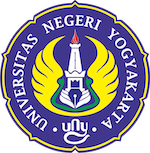Information technology has a very strategic role in helping empower people's potential. Empowerment of community members is strongly influenced by internal motivation (soft skills) and external motivation (presence of other people, environment, facilities, media, culture, community structure and so on). Community empowerment begins with making people aware of conditions, problems, needs and potential as initial capital for developing potential through capacity building (giving the power), utilizing power, managing power and developing it functionally.
Prof. Sujarwo stated that the use of information technology could help community empowerment. The use of information and communication technology (digital) to make changes in community empowerment is unavoidable. The transition from analog technology to digital technology is beneficial in speeding up work and information. "However, besides the benefits, there are threats to the application of digital technology, so digital literacy in community empowerment is needed," he said. In the aspect of community empowerment based on local potential, information and communication technology can further encourage the development of community creativity. Microsoft Office, Macromedia flash and Lectora are some examples of programs that can be used for presentations. In addition, social networks such as Facebook, Instagram, and Twitter can be a means to increase collaboration and support the implementation of various online and offline training.
Prof. Sujarwo stated that currently, there are many applications to help community empowerment, especially in villages. Village digital transformation offers a variety of digital applications to improve community services. The applications that have been developed so far are the New Generation Village and Area System (Sideka-NG) application, Village and Kelurahan Profiles (Prodeskel), Village Financial System (Siskeudes), and Village Asset Management System (Sipades).





